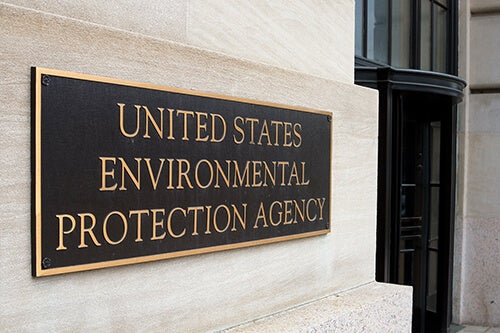The EU has long been at the forefront of setting standards for corporate sustainability, and the new Corporate Sustainability Due Diligence Directive (CS3D) is no exception. This new directive sets obligations for companies to reduce their negative impact on human rights and the environment in the EU and globally.
In December 2023, EU legislators came to an informal agreement regarding the CS3D proposed ruling. CS3D still requires formal approval by the Legal Affairs Committee, the European Parliament, and the Council of the EU. However, all parties have indicated an intent to go forward with the directive, meaning that in-scope companies should start formulating a plan of action now for supply chain sustainability due diligence.
What Is the CS3D?
The directive places obligations on in-scope companies to identify, assess, prevent, mitigate, and remedy the adverse impacts of their operations on environmental, social, and governance (ESG) key performance indicators.
Companies are required to integrate due diligence processes into their policies and risk management systems, providing clear descriptions of their approach and methods, and to include these in their code of conduct. This includes conducting due diligence on their supply chains and supplier activities to ensure their operations are not indirectly contributing to environmental or human rights abuses such as forced labor.
Noncompliance with the CS3D can result in penalties imposed by member state supervisory authorities. These penalties may include fines of up to 5% of a company’s net worldwide turnover. Noncompliant companies may also face “naming and shaming” measures. Additionally, affected individuals and organizations have the right to bring damages claims against companies for adverse impacts on human rights and the environment.
Who Will Be Affected by the CS3D?
The directive applies to EU companies with more than 500 employees and a net worldwide turnover of €150 million. Additionally, it applies to EU companies with over 250 employees and turnover exceeding €40 million if at least €20 million is generated in high-risk sectors such as textiles, clothing, footwear, agriculture, mineral resources, and construction.
However, it’s not only EU-based companies that need to pay attention. Non-EU companies with €300 million of net turnover generated in the EU are also included. These companies will have three years after the directive comes into force to meet compliance requirements. While this gives non-EU companies more time to prepare, it should be noted that establishing supply chain sustainability due diligence programs that meet European standards could take longer than many realize. Many EU companies already have due diligence processes in place in accordance with existing corporate sustainability frameworks, such as the Corporate Sustainability Reporting Directive (CSRD) that came into effect on January 5, 2023.
Proactive CS3D Compliance: Step-by-Step Guidance
For full compliance requirements, companies should refer to the official CS3D final rule when it is formally published to ensure full compliance with the directive. For effective and timely compliance, Assent recommends establishing these supply chain sustainability management processes now:
1 Engage Suppliers on Their ESG Impacts
Companies should start collecting ESG impact data from their suppliers now. This includes surveying them on their labor practices and environmental footprint (such as carbon footprint or deforestation risks), and conducting due diligence on mineral sourcing and smelters. Manufacturers will need a supply chain sustainability management solution to help them automate data collection and validation of supplier submissions.
2 Conduct Enhanced Due Diligence on Suppliers
In many cases, the worst ESG risks are hidden in the supply chain and may not be disclosed through supplier self-reporting. Manufacturers, especially those in the high-risk sectors identified in the CS3D, should use enhanced supplier screening to check for adverse media mentions, or business relationships with denied or debarred entities.
3 Benchmark Supplier ESG Risks & Record Mitigation Efforts
The CS3D requires documented due diligence around sustainability risks and any mitigation actions. Manufacturers will be best served by establishing a benchmark of supplier ESG performance and then monitoring progress toward ESG improvement goals.
Assent’s ESG management solution provides supplier risk scoring and automated recommendations to improve those scores. In addition, companies should educate their suppliers on ESG topics and update any code of conduct agreements to include sustainability-related requirements.
These three steps create the foundation for supply chain sustainability due diligence and documentation that will help manufacturers prepare for the broad requirements of the CS3D. Assent recommends that companies establish a supply chain ESG program in advance of the final CS3D rule to protect against disruption in their operations and compliance programs.
Part of a Holistic ESG Strategy
The EU is undertaking a large-scale regulatory project to achieve key sustainability goals, such as climate neutrality by 2050, under the European Green Deal. The CS3D is a vital part of the regulatory framework underpinning these efforts, but manufacturers should approach CS3D compliance as just one part of their broader ESG strategy rather than an isolated regulatory requirement.
For example, the CSRD is a closely related parallel regulation that mandates ESG disclosures with an emphasis on transparency and auditability. While the CS3D focuses on mitigating supply chain ESG risks, the CSRD expands on ESG reporting requirements and provides a mandatory reporting framework, following the key performance indicators outlined in the European Sustainability Reporting Standard (ESRS). It also includes third-party audits of the reports. Read more about the impacts and scope of the CSRD on Assent’s blog.
Manufacturers in scope of these regulations should implement a supply chain due diligence program that identifies negative ESG impacts using data collected from suppliers.
Keeping Up With the CS3D & Evolving ESG Requirements
The CS3D represents a significant step towards holding companies accountable for their impact on human rights and the environment. It encourages manufacturers to adopt responsible practices, protect vulnerable groups, and contribute to a more sustainable future. Manufacturers, particularly those in high-risk sectors, should familiarize themselves with the CS3D and take proactive steps to ensure compliance.
By implementing robust due diligence measures, engaging with stakeholders, and regularly monitoring their impact on human rights and the environment now, manufacturers will be better prepared for the CS3D as well as related ESG regulations across the EU and North America. They’ll also benefit from a more sustainable and resilient supply chain that protects their operations from disruptions that could jeopardize market access and stock value.
Learn how Assent’s supply chain ESG management solution helps manufacturers go beyond check-box sustainability to achieve deeper resilience.
Get Started













